To begin with, a place: real or imaginary, anonymous or distinguishable, sought out, reconstructed, or exist as possibilities. Then comes photography, and image-making as a way to establish a personal connection with places. The sense of place runs like a common thread throughout Loan Nguyen’s prolific body of work, prompting reflections on origins and belonging along the threshold between the interior and the exterior, the personal and the collective.
Loan Nguyen was born in Lausanne, Switzerland to a Vietnamese father and a Swiss mother. In her lens-based practice, autobiography is a central theme. Instead of investigating her genealogies or retracing objective historical facts, she incorporates a slightly fictive dimension in her work, weaving her own stories with others’ accounts into a polyphonic tale.
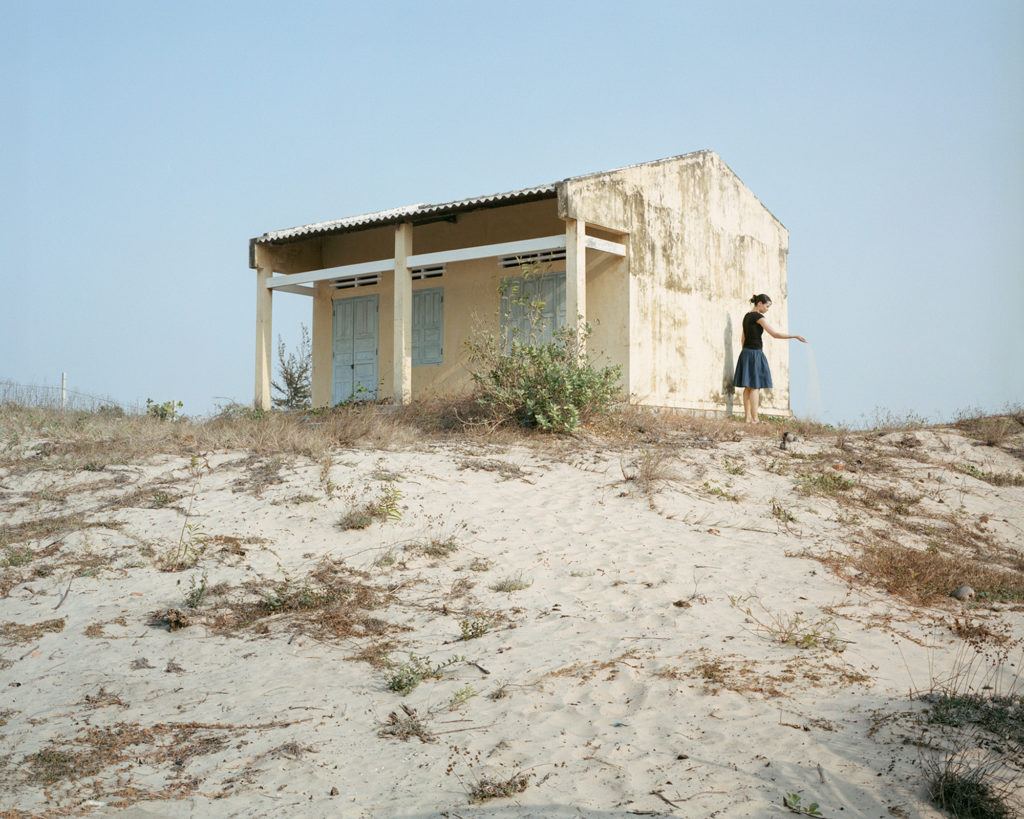
Early in Nguyen’s career, the attempt to understand her biography is manifested in introspective and contemplative images that explore the link between the human body and its surrounding environment. One of the most prominent works from this period and also her debut project, Mobile (2000-2012), is a series of self-portraits taken in vast, empty landscapes. In these minimal compositions, a small silhouette enters into a dialogue with the place through a slight gesture. The outdoor spaces, depicted with the subtle use of natural diffused light and tender colors created by nuances of weather, becomes intimate and oneiric, as if projected by her own mind. The solitary human figure, fully absorbed in her action, manifests the curiosity of a child wondering about the mysteries of the world outside, and through it her inner world.


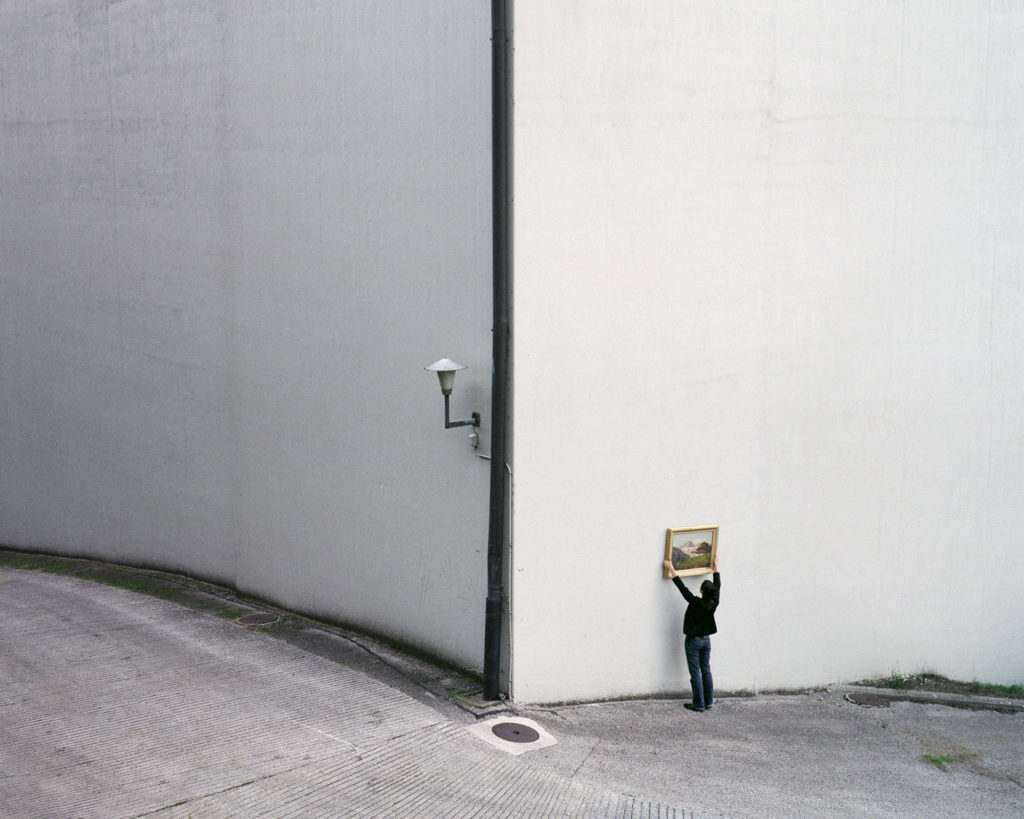
The exploration of origins is more apparent in her next project, De retour (Returning). In 2005, her father obtains Swiss nationality and returns to Vietnam for the first time after 38 years in exile. Accompanying her father in this journey, she photographs what could be the clues of their remaining connection to the country. The final work floats between different genres – photojournalism, family photography, landscape and staged portraiture, superimposing her father’s recollections with her own interpretation of Vietnam. From these seemingly disparate moments, emerges an ineffable sense of nostalgia for one’s now estranged native land.
Another pilgrimage, this time to delve into her maternal ancestry, is reconstructed in Lieux d’origine (Places of origin). Switzerland follows the principle of jus sanguinis (right of blood), by which citizenship is determined at birth by filiation. Loan Nguyen acquires the Swiss nationality from her mother, thus inheriting her mother’s birthplace: a remote mountainous village that she had never visited, and yet its name is indicated on all of her legal documents as the place of birth.
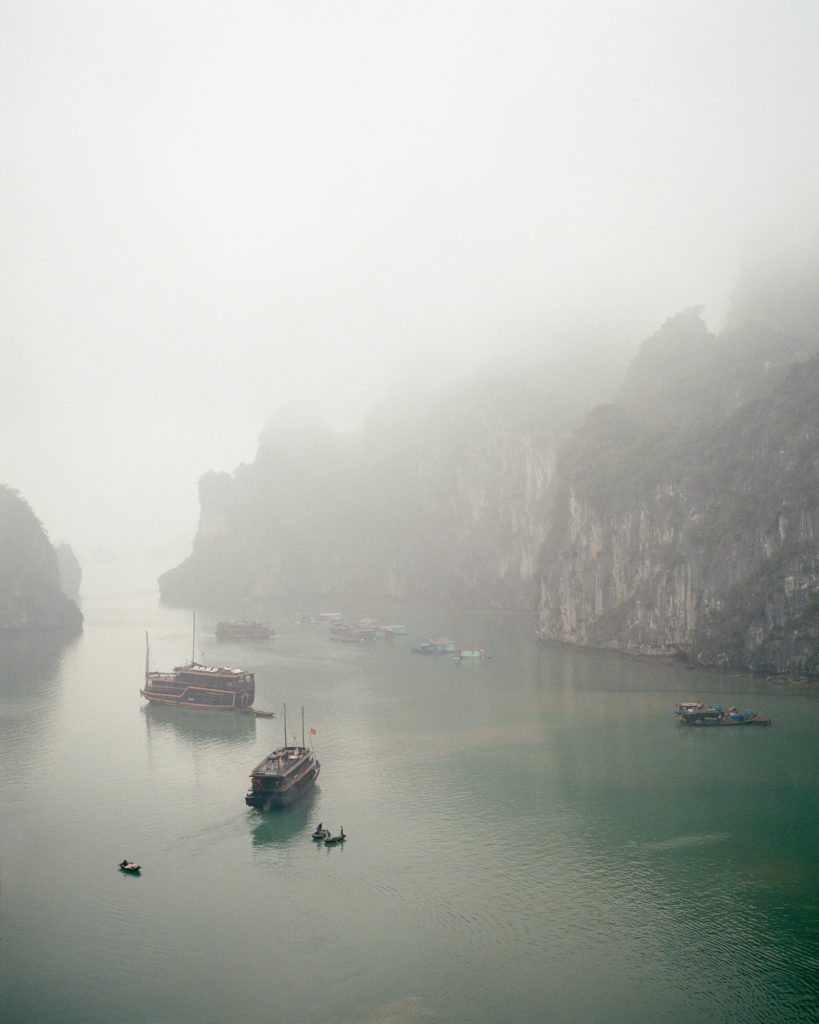
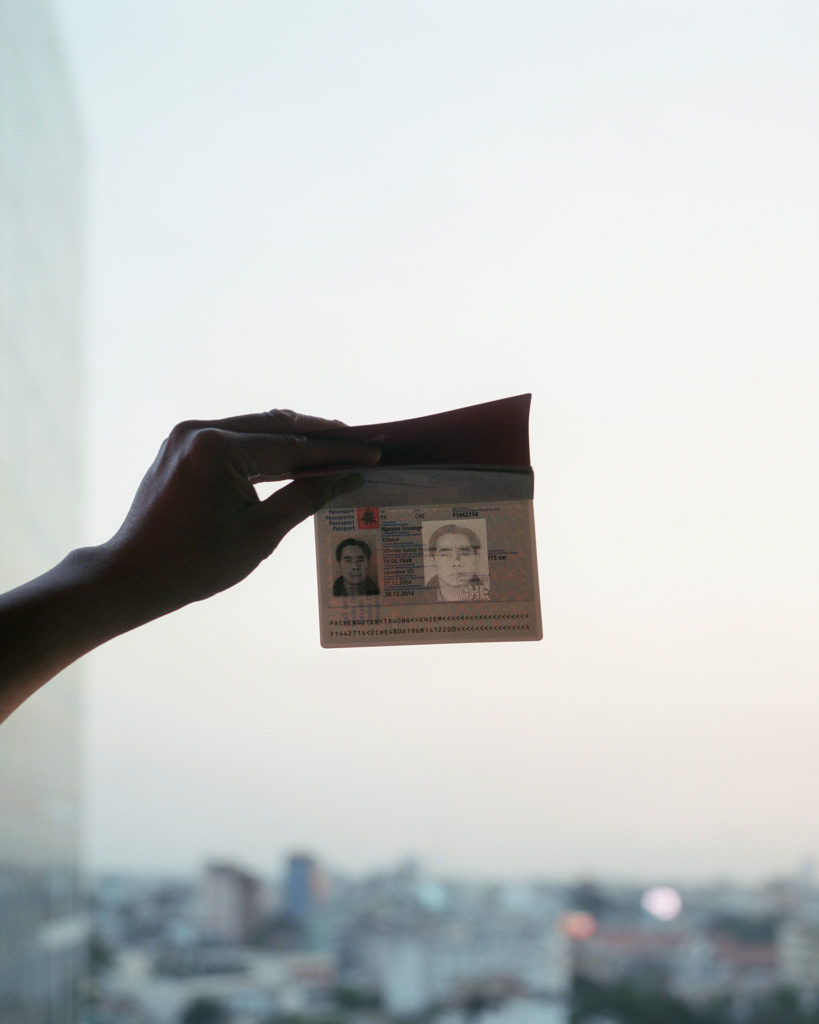

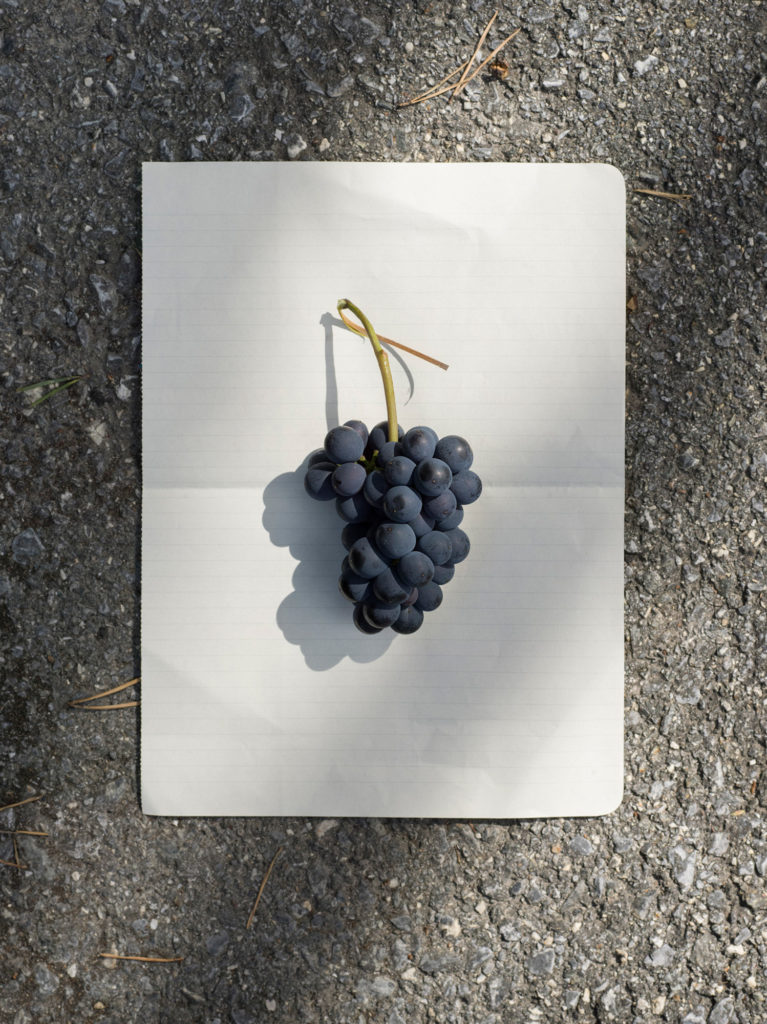
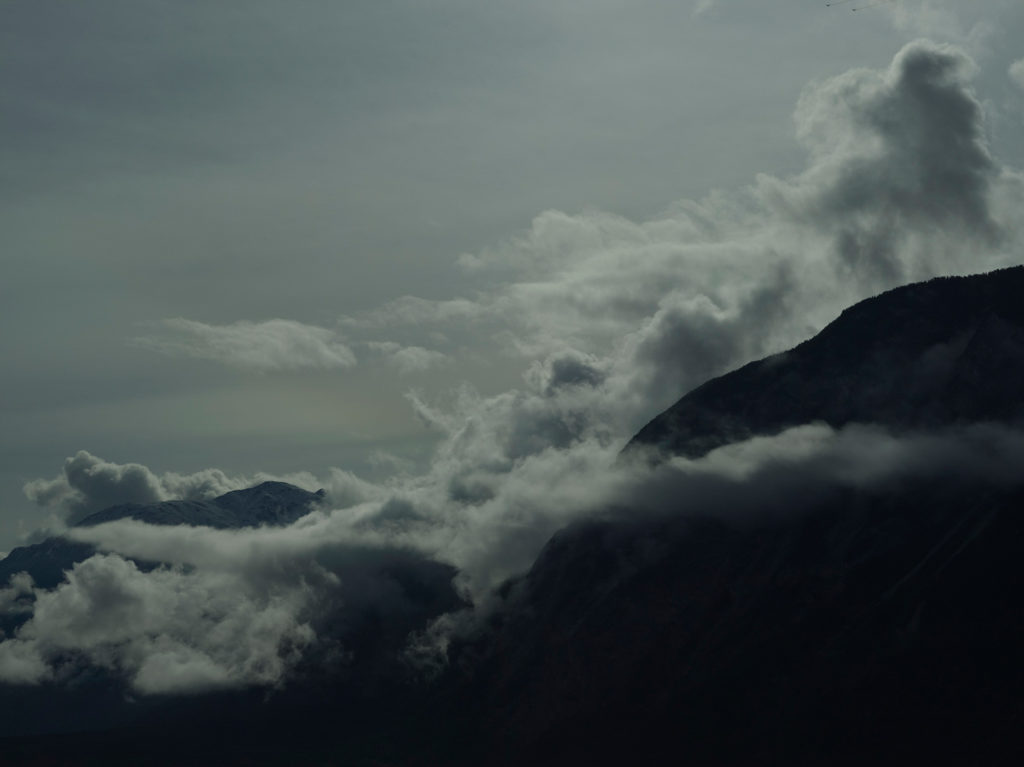
In this work, Loan Nguyen made an initiatory journey to the village and sought out hypothetical traces from her family’s past. The images accumulated along her footsteps hardly reveal any information on the bond between the territory and herself: once again, they are merely hints and signs collected in an attempt to solve the enigma of origin. Although they raise more questions than provide answers, it was through the act of making these photographs that she eventually grew attached to the foreign native land.
Around 2010, amidst the ongoing success of the series Mobile, Loan Nguyen wants to depart from what she felt had become a formula. Enrolled in an MFA program, she starts to incorporate performance into her practice, combining photography with spoken narratives. At the same time, she moves toward a documentary approach based on collecting accounts of her subjects, then shares them orally through an earpiece in her performances, in the presence of other images. Fusing her autobiography with others’ life stories, her recent works join together singular experiences and collective memory, where the personal resonates with current socio-political issues.
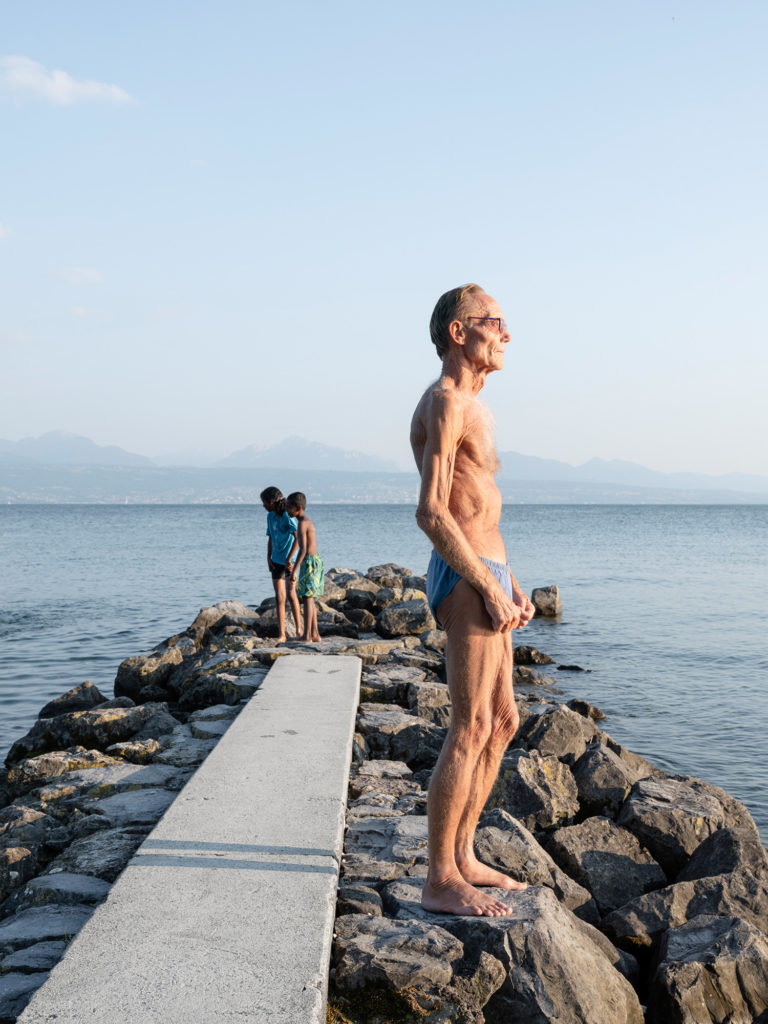
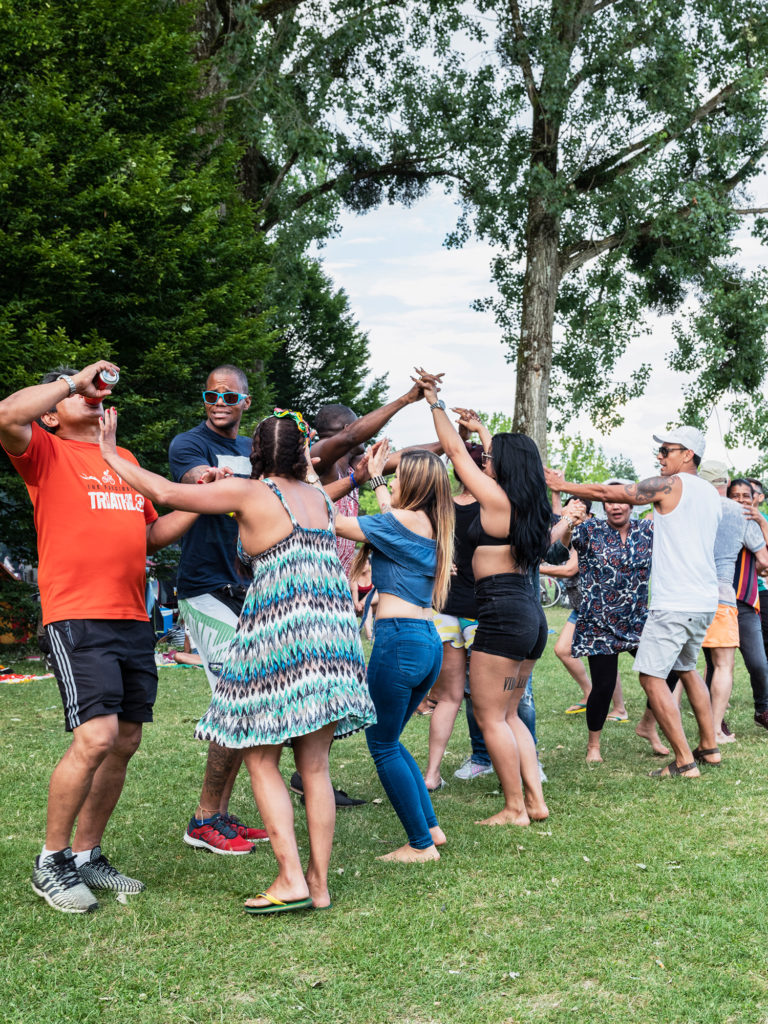

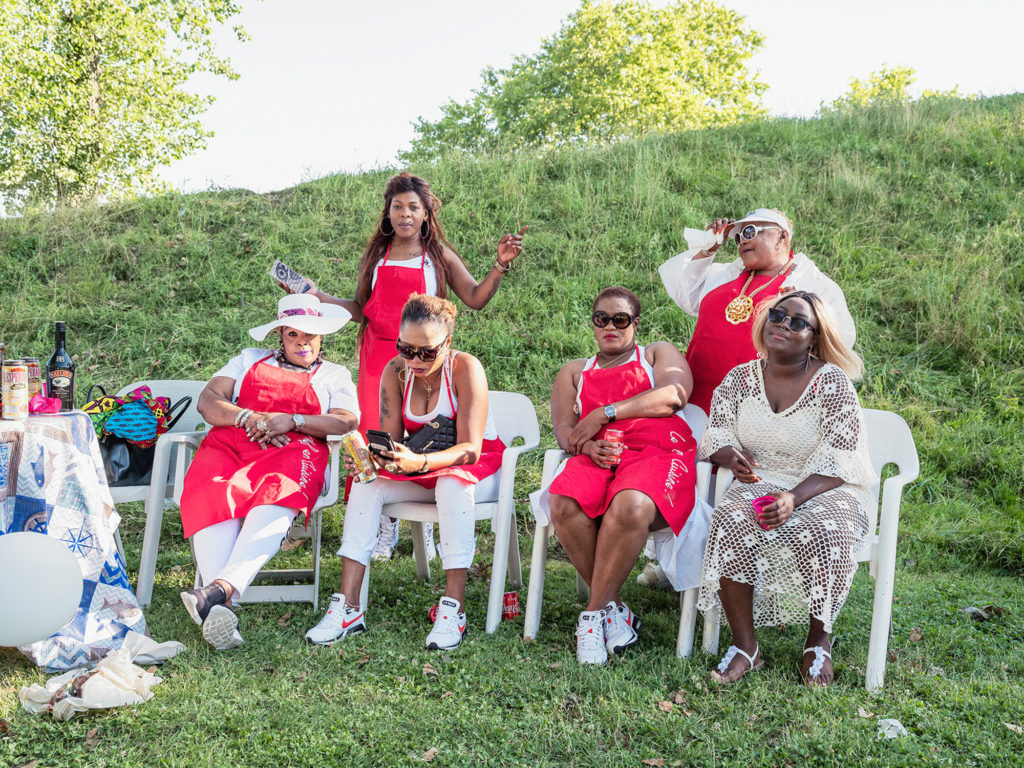
A major recent project, Vidy/Rivage (2018-2019), articulates her interest in migration issues through the photographic and sonic portraits of Lausanne inhabitants. At the invitation of the director of the Vidy Theatre in Lausanne, Loan Nguyen went to meet and photograph people picnicking on the shores of Lake Geneva near the theatre. Known as the beach of Vidy, the area is a festive and popular gathering place that brings together communities from all over the world. Initially requested to represent the diversity of the picnickers, she has subtly expressed her own criticism of the notion itself. While coexisting in the same public space, different ethnic or national groups still remain confined within the boundaries of their communities, she observes. If the accumulation of all photographs showcases various cultures, ages and practices, every single portrait emphasizes undeniable differences between each group and individual.
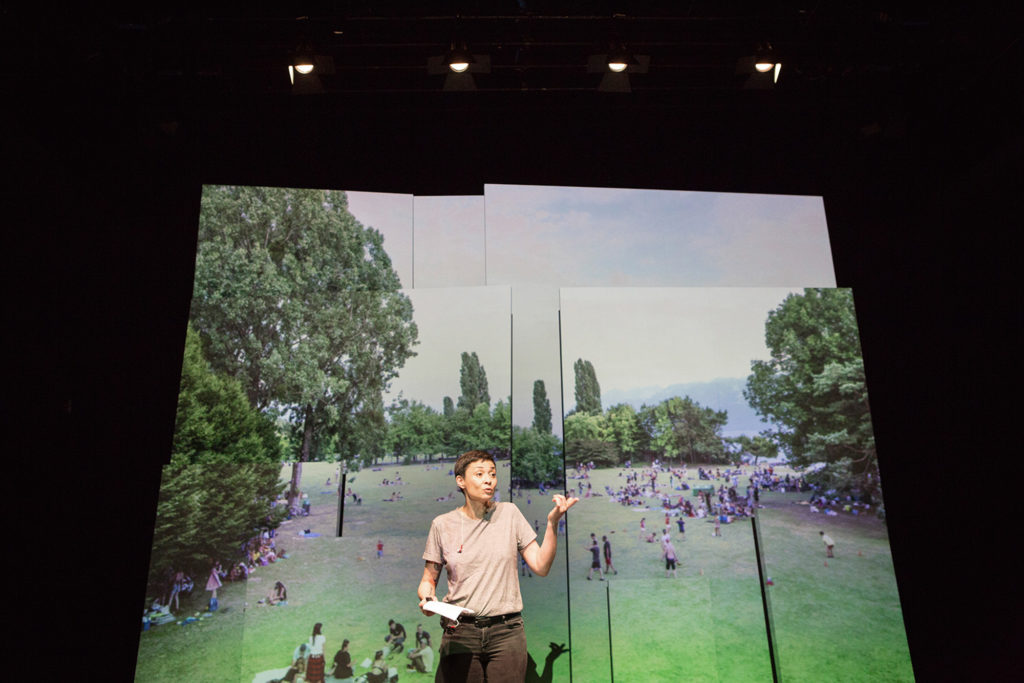

The exhibition, taking place inside the theatre, reflects this tension between the whole and the singular. Two wall-to-wall panoramas of the picnic area provide an immersive view of the place with numerous groups of people in the landscape. 14,000 postcards are reproduced from 140 resulting portraits, forming a wall of pictures that visitors can freely take home. Then, in a performance on the stage of the Vidy Theatre, Loan Nguyen interweaves her own biography with the accounts of exile given by her subjects and her family members, alongside projected portraits from the series. Through the stories told and reconfigured by her voice, her gestures and the direct presence of her body, the performance detaches photographs from all testimonial value, and turns them into evocations of new images and meanings in the spectator’s mind.
Vidy/Rivage offers a reflection on the outer social world – specifically, on issues of immigration, inclusion, and exclusion in multicultural societies – inside a cultural institution. She continues to examine this dual relation between the interior and exterior in Musée Possible (Potential Museum), a commission to document the development of the Cantonal Museum of Fine Arts in Lausanne.
On one side: photos of the building taking form, with its imposing and rigid structures, geometrical lines and inorganic materials, its aspiration toward perfection and permanence. On the other side: everything that constitutes life in its constant movements – youth and old age, intimate and public events, the nuances of nature, the fragility of illness.
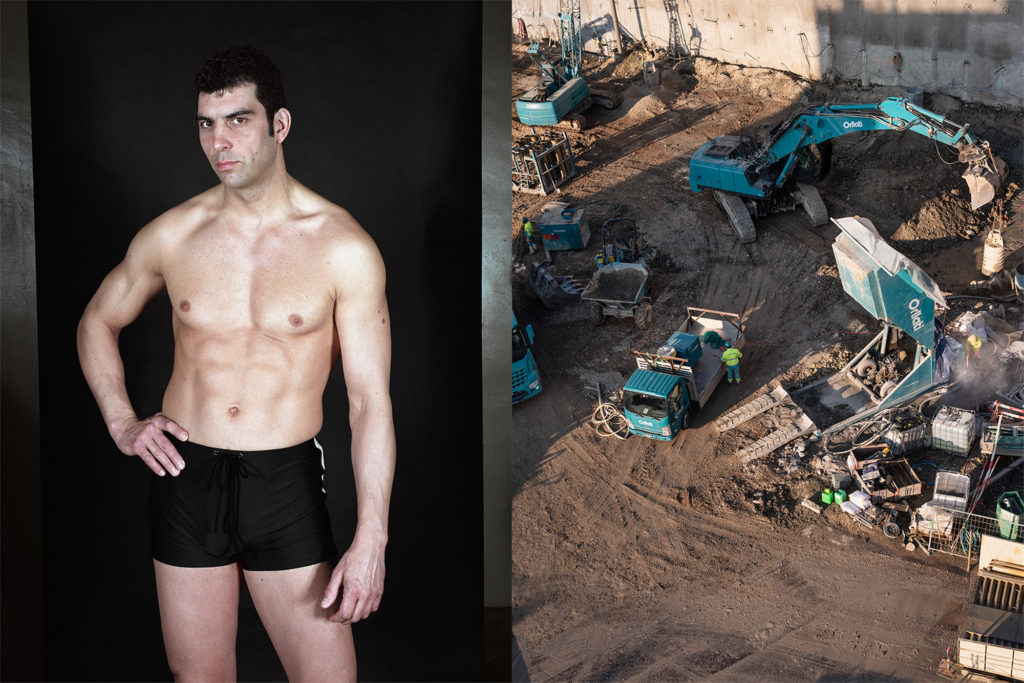
During the three-year period, Loan Nguyen and her partner, the French playwright Éric Vautrin roam every nook and cranny of the construction site to follow the birth of the museum as a physical space. Instead of simply detailing the process, they question what the future museum means to local communities. On one side: photos of the building taking form, with its imposing and rigid structures, geometrical lines and inorganic materials, its aspiration toward perfection and permanence. On the other side: everything that constitutes life in its constant movements – youth and old age, intimate and public events, the nuances of nature, the fragility of illness. Loan Nguyen recalls the creative process as a chase between the interior and the exterior: starting either from a mental image or a photo, she hunted for its parallel image through free association.
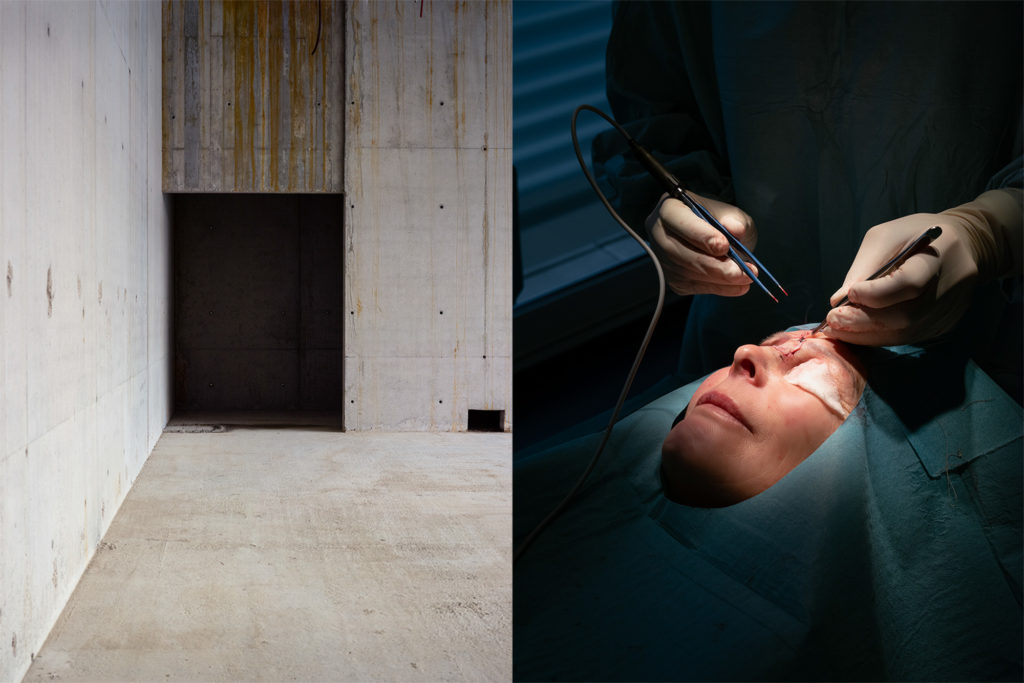
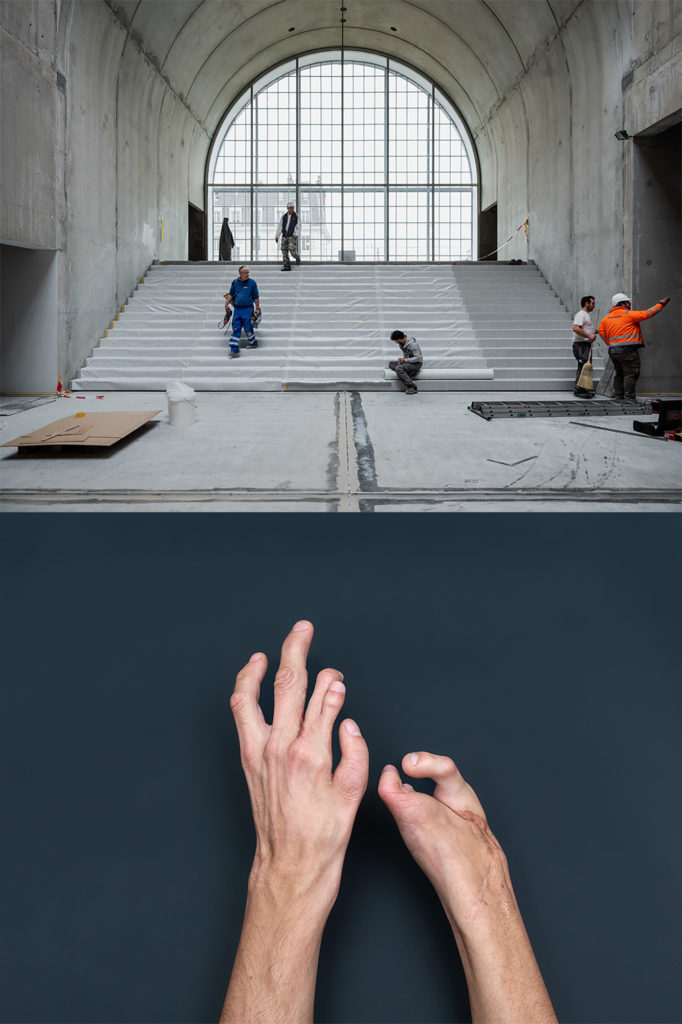
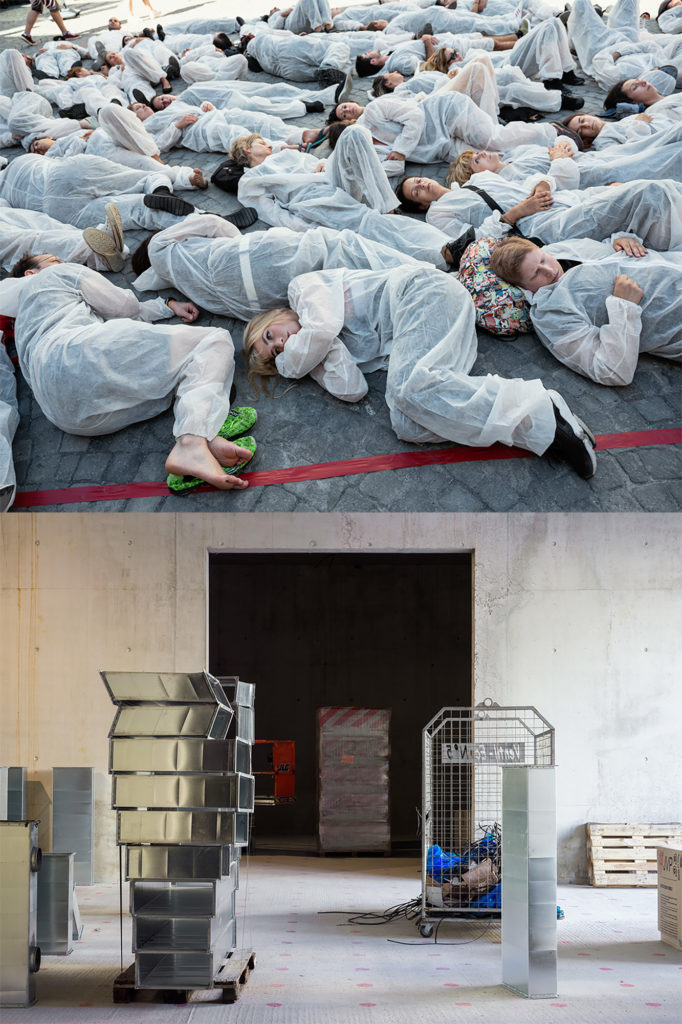
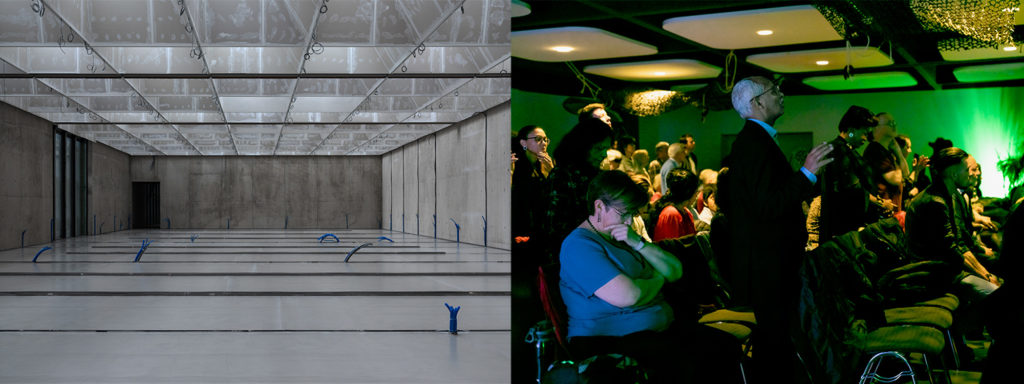
The final work includes a series of diptychs hung on wooden boards taken from the construction site, displayed at the archway that surrounds the museum’s building. Not necessarily containing a logical or intellectual explanation, the meaning of each diptych is thus left for the spectator to construct. Questions about the link between two images – one within and the other without the museum – are also questions about the significance of art and cultural institutions: How do they relate to the world outside, or are they nothing more than typical white cubes?
The photographs of Loan Nguyen are not objects of mere contemplation on a flat surface, nor are they limited to what is visible inside the frame. They need to be listened to, (re)imagined and lived in specific contexts or physical spaces, and in the mind of the spectator. Throughout her 20-year art career, while Loan Nguyen has extended her approach and subject matter, one can still recognize her visual universe by its temperance and lyricism. Drawing materials from her personal life in an unobtrusive manner, refusing dramatization and immediate emotional identification, Loan Nguyen’s photographs give us pause for thought. They are sources to countless anecdotes, told not by single, separate images but by the combination of images and text, images and speech, or by adding different images. But in the end, the return to images takes place as often as the departure.


Born in 1977, Loan Nguyen lives and works in Lausanne. She graduated from the Haute école d’art et de design in Geneva (2015) and from the Advanced photography program at Vevey Applied Art School (2000) where she is currently teaching. She has taken part in group shows and had her solo exhibitions in several galleries, festivals, and art institutions across Europe. In parallel to her career as a photographer, she continues to pursue a body of personal work between photography and performing arts.
